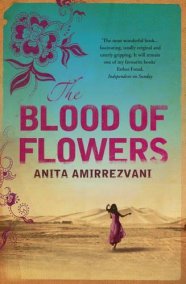December 30, 2017. Many years ago, for a family history project, my father, Wasyl MAKOTA, wrote how he and his cousin Alexander (Oles) CZECH came from Ukraine to Germany during WW II, how they ended up in Camp Ohio after the war, and then what happened to them after they left Camp Ohio.
In January 1942 they left their small farming town of Bolekhiv, in present-day western Ukraine, but then the part of Poland that had been invaded, first by the Soviets in 1939 and then by the Nazis in 1941, to go to Germany as part of the volunteer workers force in Germany. The word “volunteer” was a misnomer, as the boys did not have that many options open to them. Their families were starving, and their country had been invaded by two terrifying, occupying forces (Soviet and German). Food was scarce as the occupying forces confiscated food for their own use, leaving little or nothing for the population, including farmers like my grandparents, who owned large tracts of land.
By going to Germany, they had a chance to earn money to feed their families. At the time they left for Germany, Dad, born January 13, 1928, was 14 years old. His cousin Oles, born May 12, 1925, was 16 years old! By today’s standards, they were children.
On January 19, 1942, both boys went onto the cattle train for the start of what they hoped would be a great adventure, with lots of food to eat. It was between -30°C and -40°C and the train left at midnight. My grandmother had wrapped Dad in a sheepskin coat and gave him the family’s food rations for the journey. It saved his life, as the cattle car was unheated and many people froze or starved to death. Dad noted with horror many years later the image of frozen bodies being thrown off the train by Nazi soldiers, the first inkling that life in Germany was not going to match the image on the recruitment posters.
Dad recalled that: “After one week of travelling, we ended up in Hamelin, Germany. Oles was sent to a farmer on one side of Hamelin and I was sent to a farm in the opposite direction.” Dad had been sent to Grupenhagen, to the farm of a family named REESE. He arrived sick and starving and for the rest of his life remembered that the farmer’s wife tucked him into a bed with a feather duvet, a luxury he had never known, fed him, and looked after him until he was well enough to help around the house. The farmer had only one leg and needed a lot of help on the farm.
Dad recalled that “I learned German in a short time. The farm’s family was good to me. In June 1942 their son had to go to the army. They told me that I should have a better chance in life and that they will get another, older helper. So they sent me to the unemployment office in Hamelin and I was very lucky to get the same agent that sent me to that farmer. In German, I told him about myself and the farm, so he decided to take me to Bad Pyrmont. His friend had a bakery.”
All these years we’d wondered about the family in Grupenhagen who were able to show such compassion during wartime. Dad couldn’t remember the name of the family, only about his experience. But, in 2006, we received a German document that listed the name of the family – Reese.
Our friend, Berlin historian Ralf Gräfenstein, was able to interpret the documents we’d received in 2006 and so could tell me that there were at least two more Ukrainian workers on the Reese farm at the time my Dad was there:
- SCHEMTSCHUK (SZEMENTSCHUK), Jawdokija, born June 26, 1922 in Wekievzi Sagielowka
- LUSCH, Michael, born October 10, 1912 in Karow Rawa Ruska
Neither of these names was familiar to me, unfortunately. I’d been hoping that it was someone my Dad had stayed in touch with.
Dad died in 2012, so he was not with us when my husband Pieter and I planned a trip to Grupenhagen to see where Dad had lived and to learn more about the Reese family. Ralf put us in touch with the local historian for Grupenhagen, Karl Pape, who offered to show us around when we arrived. I was very curious to know more about the Reese family and to see a photo of them. Mr. Pape came through on all my requests, including a photo that was a gift from the surviving Reese relatives to us.

Erna and Friederich Reese.
Mr. Pape had known Friederich and Erna Reese and said that their only son Friederich (Fritz) did not survive WWII. Friederich and his brother Heinrich both had farms. Friedrich’s farm consisted of 80-85 acres of land, and his wife Erna came from a neighbouring farm. The family was hard-working and diligent.
My father’s recollection about one leg was correct. Mr. Pape confirmed that Friederich Reese had lost a leg as a young soldier in the First World War and then had a wooden leg. As their son did not survive the war, after Friederich and Erna passed away, relatives inherited the farm and leased the land. The farmhouse still exists, but had been empty for years.
A few days before our planned visit to Grupenhagen, we received an email out of the blue from Bernhard Gelderblom, a retired teacher who has done research on forced labourers in Hamelin and surrounding areas. (See his website at http://www.gelderblom-hameln.de) He had found out about our visit and said he would come to meet us in Grupenhagen. In the meantime, he sent us documents related to Dad’s employment papers, including a photo, that I’d not seen before, from the time Dad first arrived in Germany.

Wasyl Makota at age 14 in 1942, taken after his arrival in Hamelin. (Photo found in the Hamelin archive by Bernhard Gelderblom)
In the next blog entry, I’ll continue this story, this time about our emotional visit to Grupenhagen.
Do you have any anecdotes to share about Camp Ohio? Comment on this blog or email to dariadv@yahoo.ca. We need your help to build up the archive of information about Camp Ohio and its residents. Don’t forget to check out the photos on our website at http://www.dpcamps.org/burgdorf.html.
© Daria Valkenburg
Advertisements Share this:





